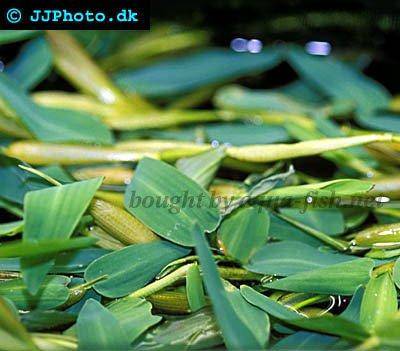Hygroryza aristata
Scientific name: Hygroryza aristata
Family: Poaceae
Maximum size reached under cultivation: 1 - 4 cm (0.39 - 1.57 inch)
014
Recommended pH range: 6.2 - 7.8
Recommended water hardness: 4 - 18°dGH (71.43 - 321.43ppm)
0°C 32°F30°C 86°F
Recommended temperature range: 22 - 28 °C (71.6 - 82.4°F)
Preferred propagation method: Cuttings
Native to: South Asia
Growth rate: Normal
Recommended substrate: Without substrate
Lighting requirements: Bright
Ideal placement in tank: Floating
Family
Poaceae
Planting Area
Hygroryza aristata, commonly known as Asian Waterweed, is a floating plant ideally suited for the surface of aquariums. Its unique grass-like appearance makes it an interesting addition to open-topped tanks, providing a natural-looking cover for the aquarium's upper levels. This plant’s floating nature allows it to create shaded areas beneath, making it perfect for setups that require diffused lighting or for aquariums housing species that prefer subdued lighting conditions. Additionally, it can serve as a natural refuge for juvenile fish and invertebrates, offering them shelter within its dense network of roots.
Propagation
Propagation of Hygroryza aristata is relatively straightforward and typically occurs through the formation of plantlets. As the plant spreads across the water surface, it produces small offshoots that can develop into independent plants. To manage its growth and prevent it from overtaking the tank, it’s important to regularly prune these plantlets. Excess growth can be carefully removed by cutting the runners or plantlets at the nodes. These cuttings can then be allowed to float freely in the aquarium or transferred to another tank, making it easy to propagate and share with other aquarists.
Difficulty
Hygroryza aristata is considered an easy-to-grow plant, making it suitable for both beginners and experienced aquarists. Its low maintenance requirements and adaptability to various water conditions make it an excellent choice for a wide range of aquarium setups. As a floating plant, it does not require a substrate, which simplifies its care and allows for greater flexibility in tank design.
Short Description
This species is unique in that it is the only grass species commonly used in aquariums. With its bright green, grass-like leaves floating on the water's surface, it adds a naturalistic touch to any aquascape. However, its rapid growth can lead to excessive shading of lower plants, so regular pruning is necessary to maintain balance within the tank. In open-topped aquariums, it can grow vigorously, often extending its roots down into the water column, creating a complex structure that benefits shy or juvenile fish by offering them a place to hide.
In its native habitats across South Asia, including countries like India, Sri Lanka, Pakistan, and China, Hygroryza aristata often grows as a weed in rice fields. Its ability to thrive in varying water conditions and temperatures (22 - 28 °C / 71.6 - 82.4°F) makes it a resilient and adaptable species. When provided with bright lighting, this plant will grow rapidly, so it’s essential to monitor and trim it to prevent it from overshadowing other plants in the aquarium.
Maintenance
Maintaining Hygroryza aristata involves regular pruning to control its growth and prevent it from monopolizing the water surface. If left unchecked, it can cover the entire surface area, blocking light to plants and fish below. To prune, simply use a pair of sharp scissors to trim back excess growth and remove any dead or decaying leaves. This will help maintain a balanced environment in the aquarium and allow light to reach lower-growing plants.
Because it is a floating plant, Hygroryza aristata does not require a substrate. It absorbs nutrients directly from the water, so a nutrient-rich environment will support healthy growth. While it does not have specific requirements for water hardness or pH, maintaining stable water parameters within the recommended range (pH 6.2 - 7.8 and dGH 4 - 18°N) will promote its overall health and vitality. This plant thrives under bright lighting conditions, which encourages denser, more compact growth. In lower light conditions, it may become leggy or sparse.
Final Note
Hygroryza aristata is an easy-to-care-for floating plant that can enhance the aesthetics and functionality of an aquarium. Its unique appearance and rapid growth make it a popular choice for aquascapers looking to create a natural, dynamic environment. By providing ample light and regular maintenance, this plant can become a key feature in your aquarium, offering shelter and a sense of security to the aquatic life within.
